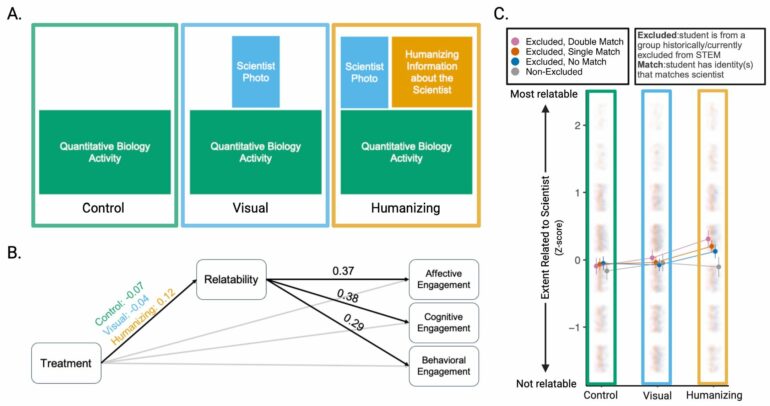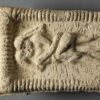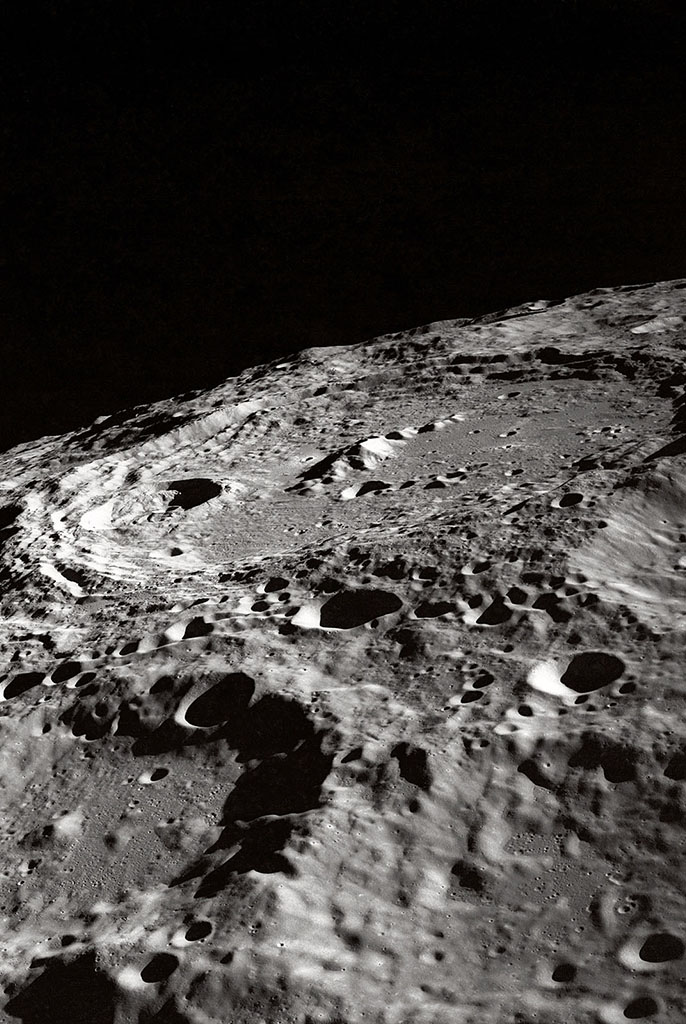Curriculum developers have made more of an effort in recent years to broaden their depictions of scientists, hoping to more accurately represent the scientific workforce. But does simply seeing a scientist who looks like them make students care more about science?
No, according to a study that surveyed college students nationwide. Instead, students need additional, humanizing information about a scientist to relate to them and better engage with class material about that scientist’s research.
“There’s an assumption that if you show a photo of a scientist to a student who shares the same identities, then that student will relate to the scientist. However, that’s not what we’re finding,” says Robin Costello, Ph.D., assistant professor of biological sciences in the University at Buffalo College of Arts and Sciences. “A photo isn’t enough.”
Costello is the first author of the study, which was published in the Proceedings of the Royal Society B: Biological Sciences. Her work was done as a postdoc at Auburn University in the lab of Cissy Ballen, who is the study’s senior author.
A collaborative 2020 study, led by Ballen’s group and curriculum developers, found that, before 2000, 88% of scientists highlighted in textbooks commonly used in introductory college courses were white men. That number dropped to 67% in 2018 as textbooks began to feature more scientists who are women and people of color, reflecting the changing scientific workforce. However, that study noted that there was still a dramatic mismatch between the scientists featured in the textbooks and the diverse undergraduate student body who used the textbooks.
“In addition, research over the decades using the Draw-A-Scientist-Test framework shows that students tend to draw scientists as white men wearing glasses and lab coats, and that this stereotypical view of scientists develops at an early age,” Costello says. “We wanted to know the impact of representing scientists who counter that stereotype.”
This current study collected survey data from over 3,700 students in undergraduate biology courses across 36 universities.
Students were given one of three versions of a biology class activity that featured data from contemporary scientists who have counter-stereotypical science identities.
The first version did not include any information about the scientist aside from their name, research, and data. The second added photos of the scientist, while the third included both photos and an interview with the scientist. In the interviews, the scientists discussed the challenges they faced in their personal and professional lives.
Students were surveyed after completing the activity. An analysis of the survey data found that scientist relatability did not increase when just photos were added; the humanizing information from the interviews was key to relatability with the scientist and increased engagement with the activity.
Using structural equation modeling, the researchers found students who received the humanizing information related to the scientists significantly more than students who only received the scientists’ names and photos.
Discover the latest in science, tech, and space with over 100,000 subscribers who rely on Phys.org for daily insights.
Sign up for our free newsletter and get updates on breakthroughs,
innovations, and research that matter—daily or weekly.
Plus, relating more to the humanized scientists was associated with higher engagement with the activity itself.
Costello says that making these kinds of changes to class materials is not an expensive or time-consuming endeavor.
“These curricular interventions are easy to do,” she says. “This type of biographical information is not scientific content, so a lot of times it’s not included in STEM courses. We often want to focus on the research, not necessarily the person who did that research. But like anything, science is a human endeavor. I think this research suggests that avoiding human stories is counterproductive.”
The class activities were developed through a collaborative effort between Data Nuggets, who provided the classroom activities and photos, and Project Biodiversify, who provided interviews with the scientists. The class activities can be freely accessed online.
More information:
Robin A. Costello et al, More than a token photo: humanizing scientists enhances student engagement, Proceedings of the Royal Society B: Biological Sciences (2025). DOI: 10.1098/rspb.2024.0879
Provided by
University at Buffalo
Citation:
Want to make scientists more relatable to students? You’ll need more than photos, study finds (2025, March 11)



